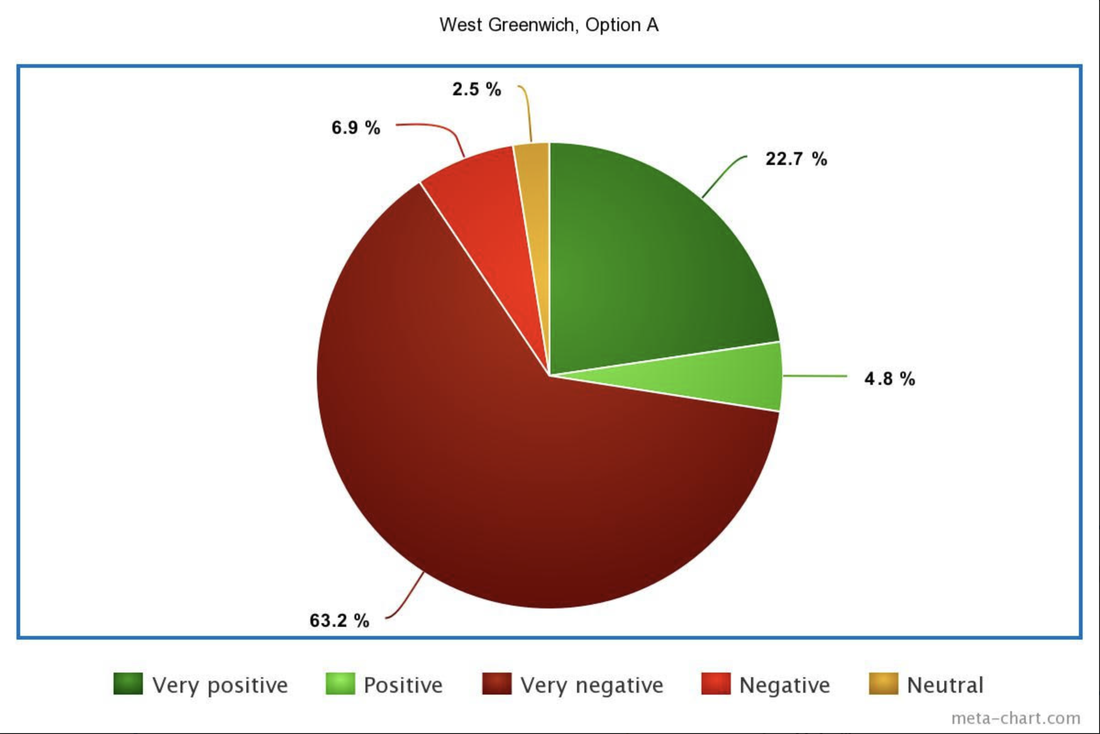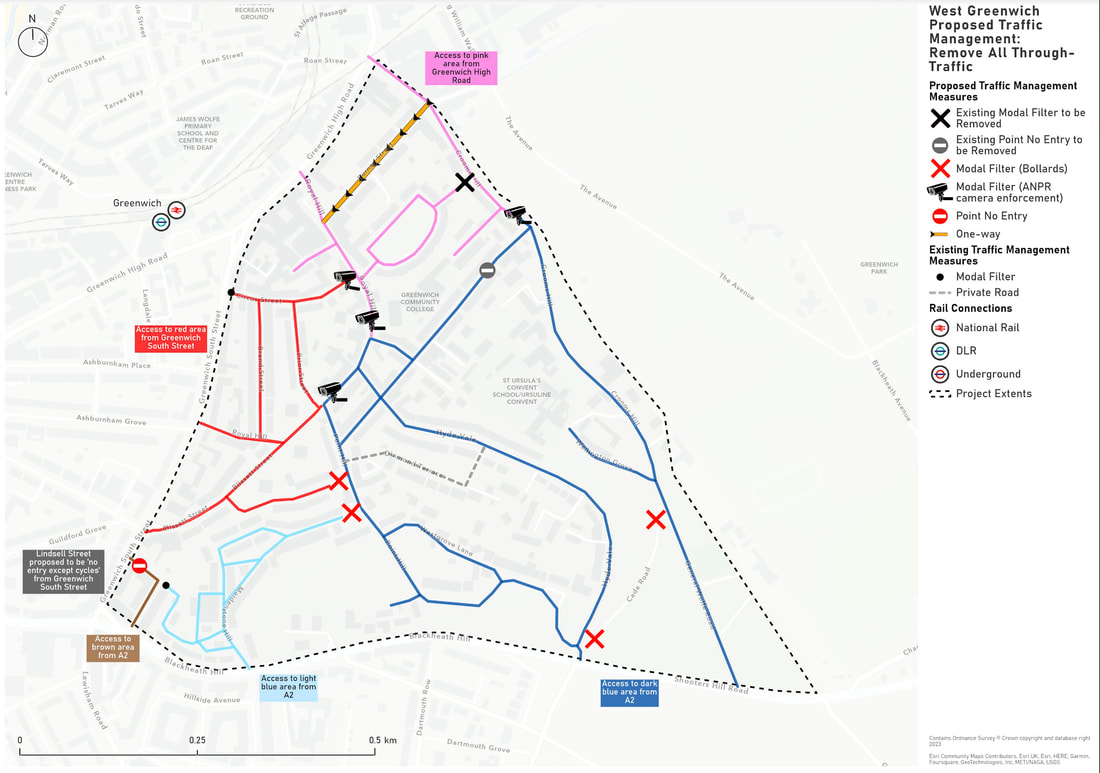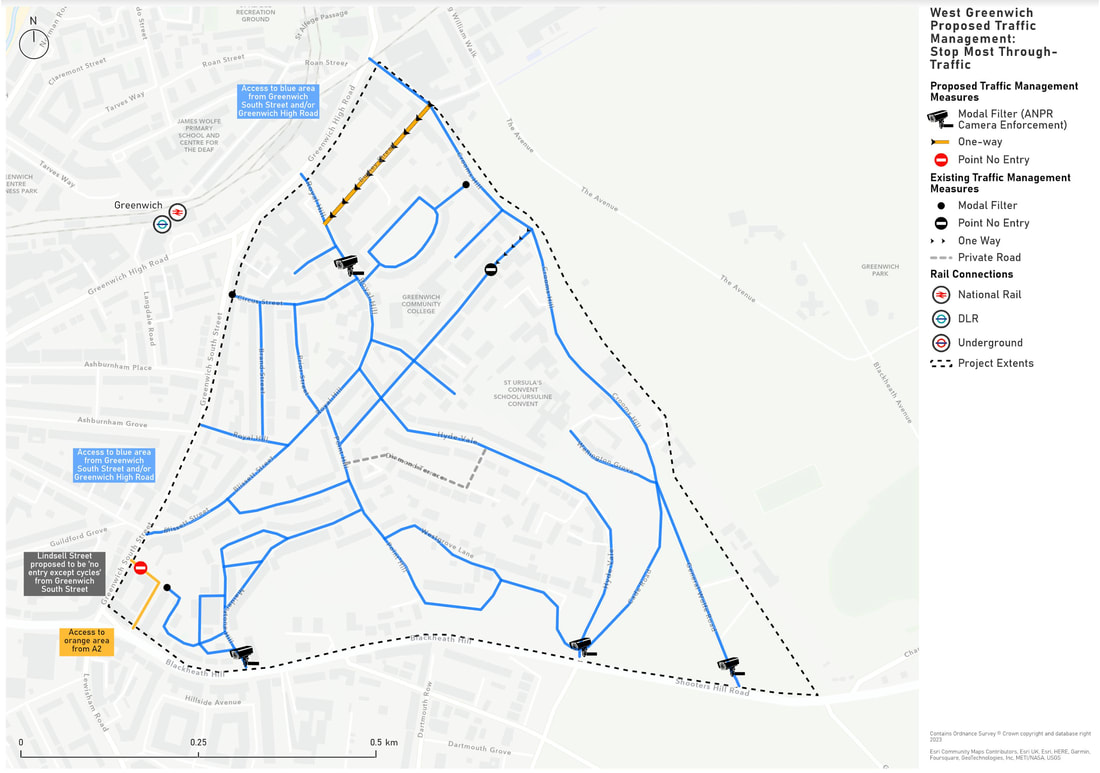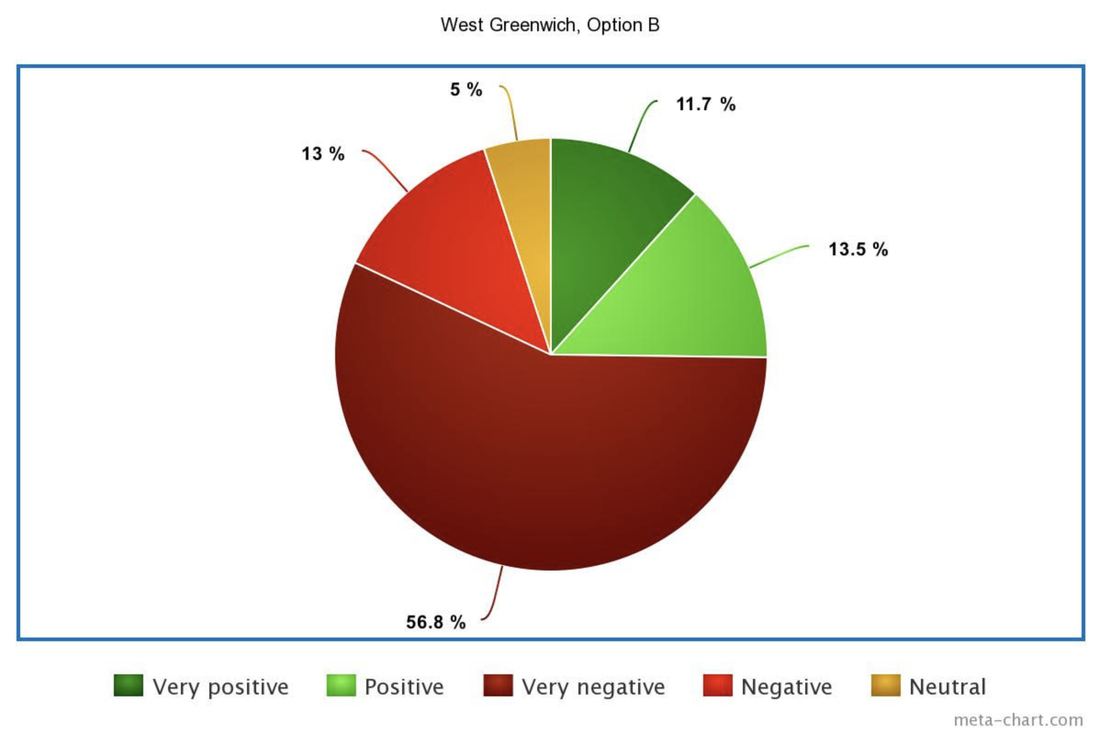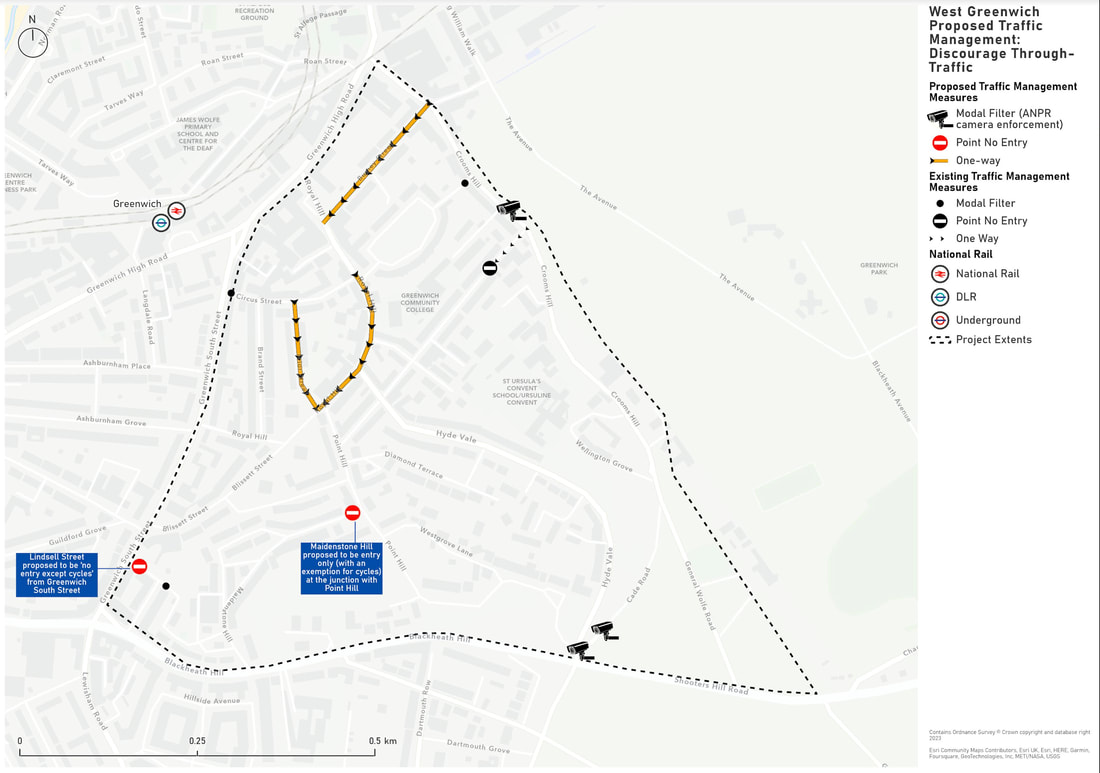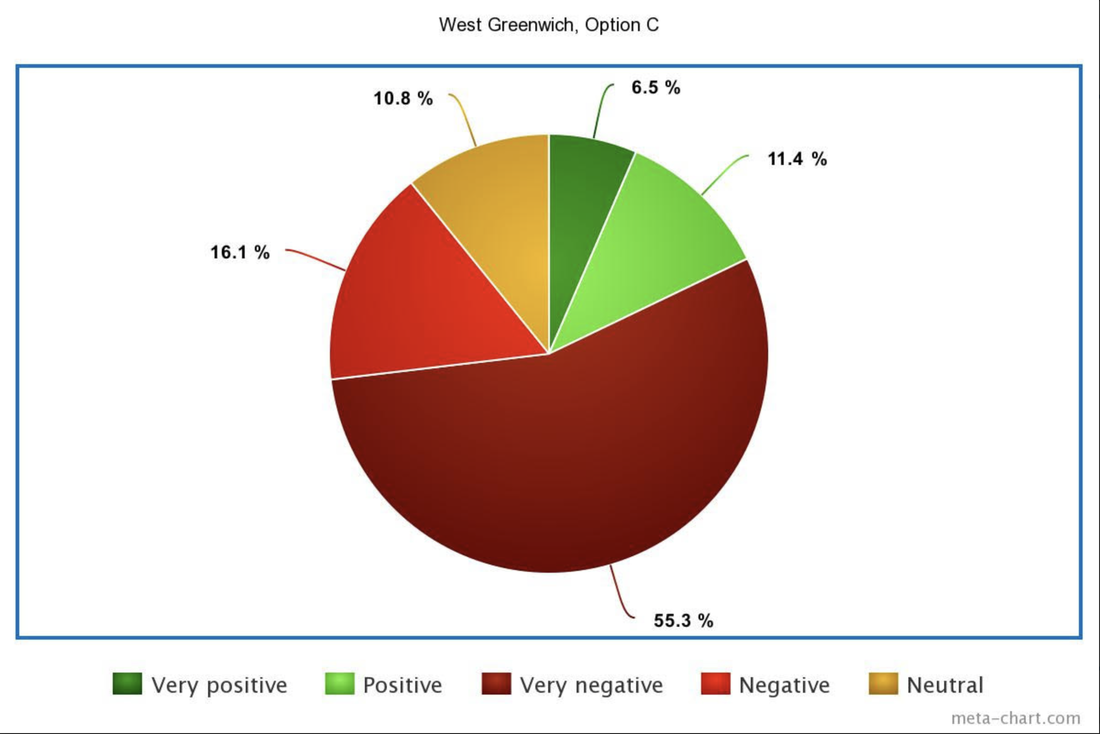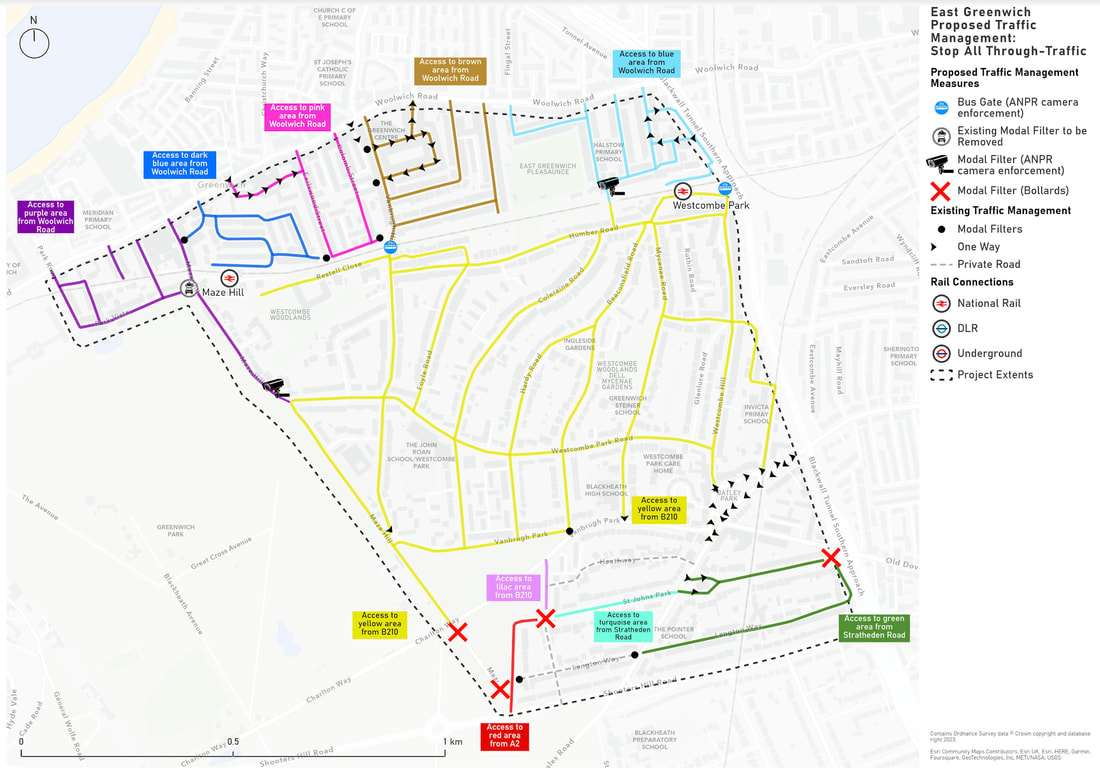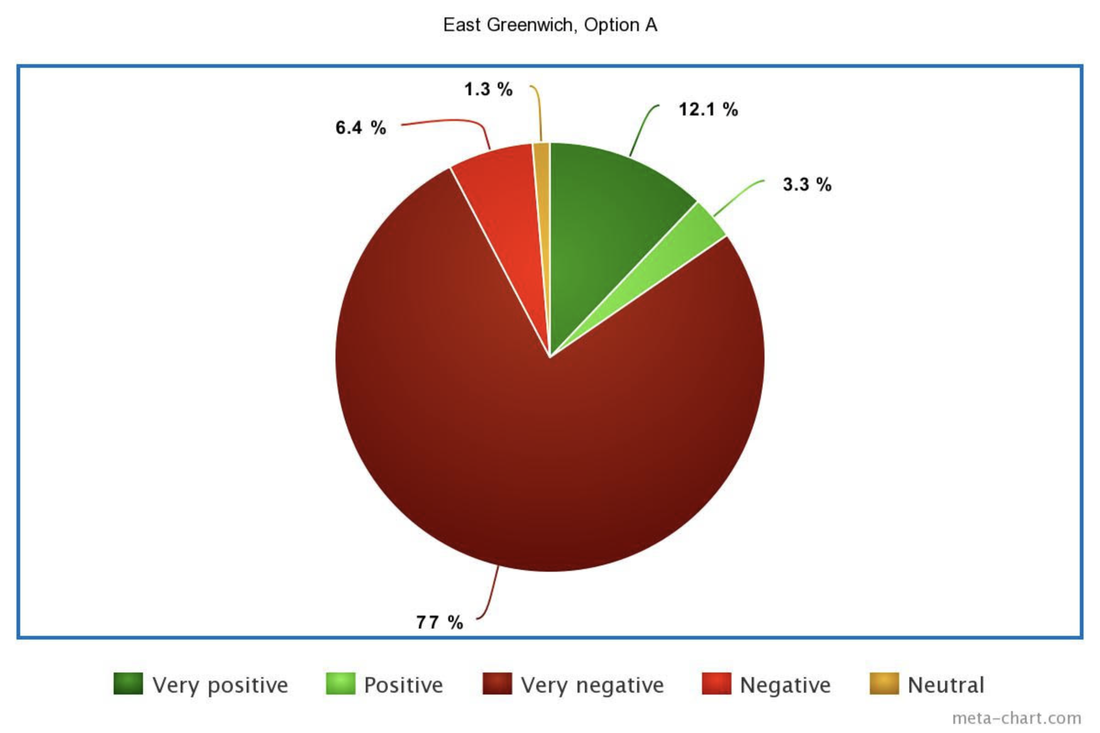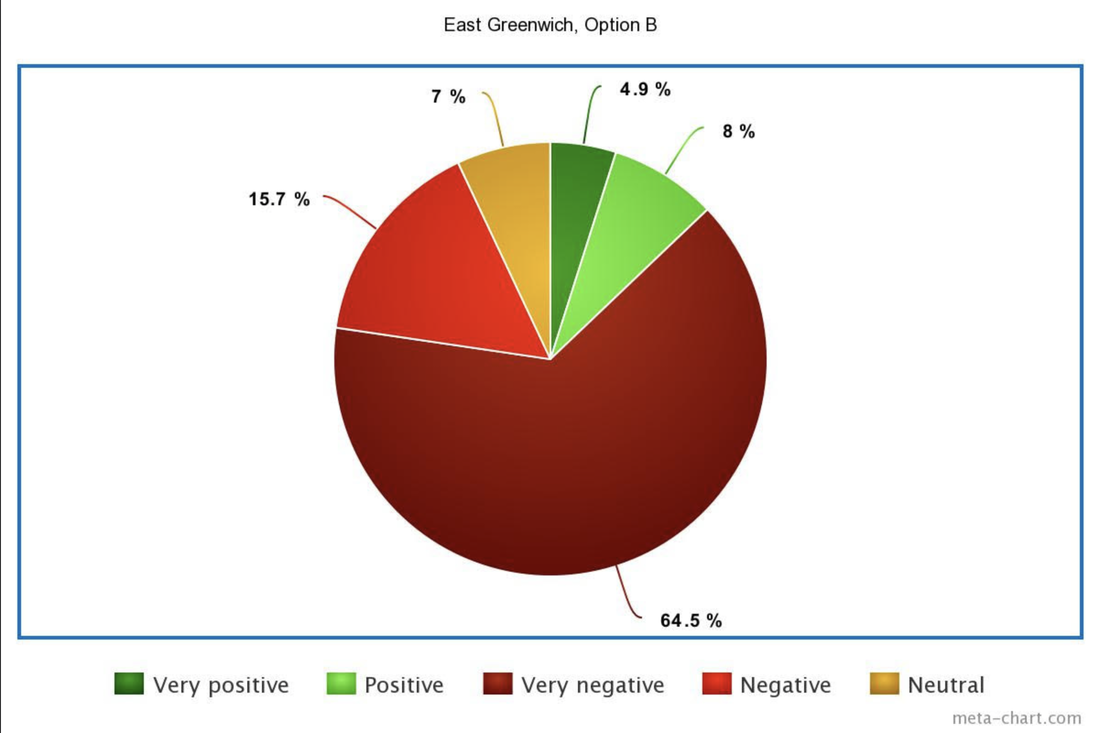Radical new plans for a low traffic neighbourhood spanning the areas on both sides of Greenwich Park resulted in a rejection of all 'options' in an official Commonplace consultation survey for the council during September 2023.
This was not the first public rejection of schemes in the area. No fewer than five official public consultations in East and West Greenwich on schemes to restrict traffic movement have been rejected by a majority of public responses. No consultation has ever been supported by a majority.
'Stage 2' of a public 'engagement' was published as an online survey at the end of August 2023. Emails to those signed up to Council alerts said the scheme was about 'neighbourhood' management, as did a letter drop to residents inside the LTN. Residents had no input into the design 'options'.
The Council claimed to have distributed 9,000 letters but they contained no mention of traffic or traffic management or the LTN - only referring to in 'neighbourhood management'. A link was printed, but a QR code on the letter was extraneous to the consultation. Information about the consultation did not reach many people living in parts of the 'LTN' area, those living on boundary roads, and business owners on Trafalgar Road and elsewhere, who would be seriously affected by the changes.
Independent data analysis immediately revealed that huge majorities of residents voted against the vehicle restrictions. The Council has been slow to acknowledge the response, only releasing the figures in a 48-page officers report released when the 8 March 2024 Decision was made.
In September 2023 the Westcombe Society published a highly critical response to the scheme, reminding the Council that proposals for East Greenwich had been rejected in 2021. The currently proposed scheme, covering steep gradients, would mean walking and/or cycling up and down hill with luggage or shopping 'simply isn't achievable for many residents'. The Society drew attention to the lack of step-free access between platforms at Westcombe Park and Maze Hill Stations, so that residents with disabilities and luggage would have to make long diversions to access the correct platform by car because of the proposed loss of vehicular access to the railway.
The Society said that speeding was a problem in the area that would not be controlled by the scheme. The Society stated, on the issue of diversion to boundary roads that it was "unacceptable to divert traffic onto residential main roads that already have high levels of pollution and congestion."
The scheme proposals - two East Greenwich and three West Greenwich 'options' - was divided into two separate (East and West) consultations. Many believed they could only respond to one consultation even though imposing restrictions on both areas will mean longer boundary journeys for all residents. Scroll down and click on the pie chart links to see how the votes stacked up.
There was no consultation option to 'do nothing': but many residents believe the neighbourhood, now free of barriers, is currently 'low traffic' and not generating problems on boundary roads or the bus network, as identified by external reports supporting the removal of the 2020 scheme in February 2022.
How the lessons of 'Hills and Vales' were ignored
Residents of the West Greenwich triangle (formerly called 'Hills and Vales') by the Council, were subjected to an experimental scheme in the 18 months to February 2022. The removal of the scheme followed adverse impacts on residents living on the boundaries, evidence of unequal treatment of vulnerable people, and majority opposition to it in a Commonplace poll. A greater proportion of residents now opposes a repeat of the experiment.
Analysing responses to the consultation on the 2020 scheme, findings by consultants (Stern) said that residents within the privileged area were more likely to be in favour of retaining the scheme. Consultants also pointed out that traffic 'reduction' within the area was in part due to the existence of barriers, while local traffic almost doubled as a result of diversions and boundary-type displacement to Royal Hill and Burney Street (supposedly part of the area), as well as to planned boundaries such as Greenwich South St and Blackheath Hill.
Stern's 2022 analysis of Equalities Act impacts suggested a number of disproportionate impacts on vulnerable groups and proposed potential mitigations. Most have not been followed through, and the the work of outside consultants and Greenwich's traffic managers belies an unacceptable level of ignorance about the area. For instance, the Equalities report refers to St Ursula's School receiving SEN children, but does not mention James Wolfe Primary School at all, or the SEN provision it makes.
This was not the first public rejection of schemes in the area. No fewer than five official public consultations in East and West Greenwich on schemes to restrict traffic movement have been rejected by a majority of public responses. No consultation has ever been supported by a majority.
'Stage 2' of a public 'engagement' was published as an online survey at the end of August 2023. Emails to those signed up to Council alerts said the scheme was about 'neighbourhood' management, as did a letter drop to residents inside the LTN. Residents had no input into the design 'options'.
The Council claimed to have distributed 9,000 letters but they contained no mention of traffic or traffic management or the LTN - only referring to in 'neighbourhood management'. A link was printed, but a QR code on the letter was extraneous to the consultation. Information about the consultation did not reach many people living in parts of the 'LTN' area, those living on boundary roads, and business owners on Trafalgar Road and elsewhere, who would be seriously affected by the changes.
Independent data analysis immediately revealed that huge majorities of residents voted against the vehicle restrictions. The Council has been slow to acknowledge the response, only releasing the figures in a 48-page officers report released when the 8 March 2024 Decision was made.
In September 2023 the Westcombe Society published a highly critical response to the scheme, reminding the Council that proposals for East Greenwich had been rejected in 2021. The currently proposed scheme, covering steep gradients, would mean walking and/or cycling up and down hill with luggage or shopping 'simply isn't achievable for many residents'. The Society drew attention to the lack of step-free access between platforms at Westcombe Park and Maze Hill Stations, so that residents with disabilities and luggage would have to make long diversions to access the correct platform by car because of the proposed loss of vehicular access to the railway.
The Society said that speeding was a problem in the area that would not be controlled by the scheme. The Society stated, on the issue of diversion to boundary roads that it was "unacceptable to divert traffic onto residential main roads that already have high levels of pollution and congestion."
The scheme proposals - two East Greenwich and three West Greenwich 'options' - was divided into two separate (East and West) consultations. Many believed they could only respond to one consultation even though imposing restrictions on both areas will mean longer boundary journeys for all residents. Scroll down and click on the pie chart links to see how the votes stacked up.
There was no consultation option to 'do nothing': but many residents believe the neighbourhood, now free of barriers, is currently 'low traffic' and not generating problems on boundary roads or the bus network, as identified by external reports supporting the removal of the 2020 scheme in February 2022.
How the lessons of 'Hills and Vales' were ignored
Residents of the West Greenwich triangle (formerly called 'Hills and Vales') by the Council, were subjected to an experimental scheme in the 18 months to February 2022. The removal of the scheme followed adverse impacts on residents living on the boundaries, evidence of unequal treatment of vulnerable people, and majority opposition to it in a Commonplace poll. A greater proportion of residents now opposes a repeat of the experiment.
Analysing responses to the consultation on the 2020 scheme, findings by consultants (Stern) said that residents within the privileged area were more likely to be in favour of retaining the scheme. Consultants also pointed out that traffic 'reduction' within the area was in part due to the existence of barriers, while local traffic almost doubled as a result of diversions and boundary-type displacement to Royal Hill and Burney Street (supposedly part of the area), as well as to planned boundaries such as Greenwich South St and Blackheath Hill.
Stern's 2022 analysis of Equalities Act impacts suggested a number of disproportionate impacts on vulnerable groups and proposed potential mitigations. Most have not been followed through, and the the work of outside consultants and Greenwich's traffic managers belies an unacceptable level of ignorance about the area. For instance, the Equalities report refers to St Ursula's School receiving SEN children, but does not mention James Wolfe Primary School at all, or the SEN provision it makes.
The 2023 Consultation response
WG Option A was rejected by 70% (aggregating 'negative' and 'very negative') while 27.5% of respondents viewed it more favourably. Options B and C were similarly split, but 'positivity' for Option C was only 18%.
East Greenwich Option A was rejected by more than 83% of 1,641 respondents, with just 15.4% in favour ('positive' and 'very positive'). Option B fared slightly better with 80.2% against and only 12.9% in favour.
WG Option A was rejected by 70% (aggregating 'negative' and 'very negative') while 27.5% of respondents viewed it more favourably. Options B and C were similarly split, but 'positivity' for Option C was only 18%.
East Greenwich Option A was rejected by more than 83% of 1,641 respondents, with just 15.4% in favour ('positive' and 'very positive'). Option B fared slightly better with 80.2% against and only 12.9% in favour.
West Greenwich Option A
West Greenwich Option A creates four mini-LTNs. Similar to the 2020 scheme, it is more restrictive for residents and will create longer boundary detours along Greenwich South Street and Trafalgar Road for essential traffic. Delivery vehicles of all sizes, residents and visitors will be forced to make dangerous 3-point turns on narrow streets.
West Greenwich Option B
West Greenwich Option B cuts all access from the A2 (unless using a Blue Badge or black cab). Access to the entire area is via Blisset Street/Little Royal Hill, or (inbound only) via the northern end of Crooms Hill from Greenwich High Road. This means that an east-west run through the area will be created between Greenwich High Road and the south end of GSS.
The focus on Blissett Street as the main two-way access for the entire area would put pressure on its uncontrolled junction with Greenwich South Street and on the dangerous Blackheath Hill junction. Increased pressure on Blackheath Hill will mean more localised dangerous pollution on a major road carrying freight.
The focus on Blissett Street as the main two-way access for the entire area would put pressure on its uncontrolled junction with Greenwich South Street and on the dangerous Blackheath Hill junction. Increased pressure on Blackheath Hill will mean more localised dangerous pollution on a major road carrying freight.
West Greenwich Option C
If the Greenwich Transport Strategy team had set out to create ‘rat-runs’ through the area, they could not have done better than to invent this option. James Wolfe Primary School is not even marked on the map. At present West Greenwich is peaceful and quiet, with the area's only traffic calming measure - a two way priority controlled pinch point. This will be replaced by a one-way race track for cut throughs. One-ways will also create pressure on narrow Brand Street and Circus Street. Residents are worried that, with no speed enforcement, one-ways will encourage faster driving.
East Greenwich Option A
East Greenwich Option A. A vast 'yellow' Zone would exist between the 'railway' barrier (traffic cannot access the area via Maze Hill, or any bridge or crossing point in the area) on its northern edge, and Charlton Way/St John's Park to the south. Access to the A2 will be lost. Access for the yellow zone will only exist via the Blackheath Standard gyratory. Drivers would not be able to access the A2 or A102 but would enter and exit via Charlton Road or Old Dover Road. Charlton slopes (Eastcombe Avenue and Victoria Way) will offer a run to Woolwich Road, or alternatively, vehicles will have to double back to Sun and Sands to travel west.
East Greenwich Option B
East Greenwich Option B diagram fails to provide sufficient information on access on the eastern edge of the area - except via the B210 (from Charlton) and B212 (between the A2 and Blackheath Standard gyratory). Access to Westcombe Hill - which will be the unofficial internal boundary for the area - is vague and clearly ill-understood. Blackheath Standard gyratory is home to all local shopping in the southerly area of East Greenwich, and already busy with one-way bus and car traffic. Increased vehicle traffic will make shopping on foot even more hazardous.
